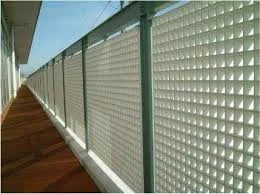
-
 Afrikaans
Afrikaans -
 Albanian
Albanian -
 Amharic
Amharic -
 Arabic
Arabic -
 Armenian
Armenian -
 Azerbaijani
Azerbaijani -
 Basque
Basque -
 Belarusian
Belarusian -
 Bengali
Bengali -
 Bosnian
Bosnian -
 Bulgarian
Bulgarian -
 Catalan
Catalan -
 Cebuano
Cebuano -
 China
China -
 China (Taiwan)
China (Taiwan) -
 Corsican
Corsican -
 Croatian
Croatian -
 Czech
Czech -
 Danish
Danish -
 Dutch
Dutch -
 English
English -
 Esperanto
Esperanto -
 Estonian
Estonian -
 Finnish
Finnish -
 French
French -
 Frisian
Frisian -
 Galician
Galician -
 Georgian
Georgian -
 German
German -
 Greek
Greek -
 Gujarati
Gujarati -
 Haitian Creole
Haitian Creole -
 hausa
hausa -
 hawaiian
hawaiian -
 Hebrew
Hebrew -
 Hindi
Hindi -
 Miao
Miao -
 Hungarian
Hungarian -
 Icelandic
Icelandic -
 igbo
igbo -
 Indonesian
Indonesian -
 irish
irish -
 Italian
Italian -
 Japanese
Japanese -
 Javanese
Javanese -
 Kannada
Kannada -
 kazakh
kazakh -
 Khmer
Khmer -
 Rwandese
Rwandese -
 Korean
Korean -
 Kurdish
Kurdish -
 Kyrgyz
Kyrgyz -
 Lao
Lao -
 Latin
Latin -
 Latvian
Latvian -
 Lithuanian
Lithuanian -
 Luxembourgish
Luxembourgish -
 Macedonian
Macedonian -
 Malgashi
Malgashi -
 Malay
Malay -
 Malayalam
Malayalam -
 Maltese
Maltese -
 Maori
Maori -
 Marathi
Marathi -
 Mongolian
Mongolian -
 Myanmar
Myanmar -
 Nepali
Nepali -
 Norwegian
Norwegian -
 Norwegian
Norwegian -
 Occitan
Occitan -
 Pashto
Pashto -
 Persian
Persian -
 Polish
Polish -
 Portuguese
Portuguese -
 Punjabi
Punjabi -
 Romanian
Romanian -
 Russian
Russian -
 Samoan
Samoan -
 Scottish Gaelic
Scottish Gaelic -
 Serbian
Serbian -
 Sesotho
Sesotho -
 Shona
Shona -
 Sindhi
Sindhi -
 Sinhala
Sinhala -
 Slovak
Slovak -
 Slovenian
Slovenian -
 Somali
Somali -
 Spanish
Spanish -
 Sundanese
Sundanese -
 Swahili
Swahili -
 Swedish
Swedish -
 Tagalog
Tagalog -
 Tajik
Tajik -
 Tamil
Tamil -
 Tatar
Tatar -
 Telugu
Telugu -
 Thai
Thai -
 Turkish
Turkish -
 Turkmen
Turkmen -
 Ukrainian
Ukrainian -
 Urdu
Urdu -
 Uighur
Uighur -
 Uzbek
Uzbek -
 Vietnamese
Vietnamese -
 Welsh
Welsh -
 Bantu
Bantu -
 Yiddish
Yiddish -
 Yoruba
Yoruba -
 Zulu
Zulu
grp piping system
The Advantages of GRP Piping Systems
Glass Reinforced Plastic (GRP), also known as Fiberglass Reinforced Plastic (FRP), has gained significant traction over the years as a preferred material for piping systems across various industries. Known for its excellent strength-to-weight ratio and resistance to corrosion, GRP piping systems are increasingly being utilized in water treatment, sewage systems, chemical processing, and even in offshore platforms. This article explores the advantages of GRP piping systems, which contribute to their growing popularity.
One of the most prominent benefits of GRP piping is its exceptional corrosion resistance. Traditional metal pipes, such as steel or iron, are susceptible to rust and degradation when exposed to various chemicals and environmental conditions. GRP pipes, on the other hand, are engineered to resist corrosive agents, making them ideal for transporting aggressive fluids such as acids, alkalis, and seawater. This inherent resistance not only extends the lifespan of the piping system but also reduces maintenance costs, as the frequency of repairs and replacements can be significantly minimized.
The Advantages of GRP Piping Systems
The structural integrity of GRP pipes is another compelling benefit. Despite being lightweight, these pipes possess high tensile strength and are capable of withstanding considerable pressure. This strength ensures that they can perform effectively in various applications, including high-pressure environments. Additionally, GRP pipes are less prone to fracture compared to brittle materials, thereby enhancing safety and reliability in piping systems.
grp piping system

In terms of environmental impact, GRP piping systems stand out due to their recyclability. The materials used in the production of GRP can be recycled to some extent, which aligns with sustainable practices and reduces waste. As more industries advocate for eco-friendly alternatives, the use of GRP pipes supports compliance with environmental regulations and contributes to a greener footprint.
Moreover, GRP piping systems exhibit excellent thermal insulation properties. Their low thermal conductivity reduces heat loss or gain during fluid transport, making them suitable for transporting hot or cold fluids. This property not only improves energy efficiency but also helps maintain the desired temperature levels within the system.
Furthermore, the versatility of GRP piping systems allows for customization in design and manufacturing. Pipes can be produced in various diameters, shapes, and lengths to meet specific project requirements. This flexibility aids engineers and designers in optimizing fluid flow and ensuring efficient system performance.
In conclusion, GRP piping systems present a range of advantages that make them an attractive choice for numerous applications. Their corrosion resistance, lightweight nature, strength, environmental sustainability, and thermal insulation capabilities position them as a reliable and cost-effective solution for modern piping challenges. As industries continue to seek efficient and durable piping solutions, the demand for GRP systems is expected to rise, paving the way for innovation and advancement in piping technology.









